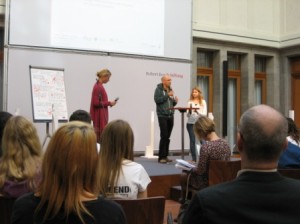Looking Back at Cancun: Part 2

Here's Part 2 of Thorsten Schäfer's commentary:
Moving Forward After Cancun
Cancún was a symbolic victory. The concrete details on climate policy still have to be hammered out. One example: the participating countries failed to come up with an answer to how environmental policies will be funded. It’s a crucial question that has to be addressed before any sort of climate agreement can even work. Another example: nobody knows what the terms of a new forest preservation program would include—or if it’ll end up being abused and ignored like the Clean Development Mechanism (CDM) from the Kyoto Protocol.
Under the CDM program, companies from wealthy industrial nations receive emissions certificates whenever they start new climate protection projects in developing countries. But what began as an incentive to protect the environment has turned into a multi-billion dollar industry. Some companies are raking in money from projects that have already existed for years or have little noticeable environmental benefit.
If international leaders don’t make forest preservation a top priority, some environmental organizaitons worry we could end up right back where we started. Just picture this scenario: you could have huge companies making a lot of money by clearing out naturally existing habitats and planting giant monocultures. On the surface, it would look like the company is adding to the region’s vegetation. But in reality, a monoculture would store far less CO2 and wouldn’t have nearly as much biodiversity as the original habitat. This could all be avoided if negotiators draw up strict forest preservation guidelines at the Durban summit next year.
But much more still needs to be done in Durban. Like actually formalizing the agreement to keep the rise of global temperatures under 2 degrees. Also, both the USA and China have to be bound to any new treaty. The decision to simply extend the Kyoto Protocol terms was a mistake because it allowed both world powers to remain outside the loop. And all sides need to address the gap in legislation when Kyoto expires. Ratifying a new treaty can take decades, and international leaders will have to come up with a sensible way to bridge that gap.
Cancun was a success simply because it left so many questions unanswered. Mexico’s foreign minister Patricia Espinosa was only able to gather so many countries around one table because they weren’t bound to any specific evironmental legislation. Now, the pressure lies squarely on the Durban talks next year.
Stay tuned for Part 3 tomorrow!






